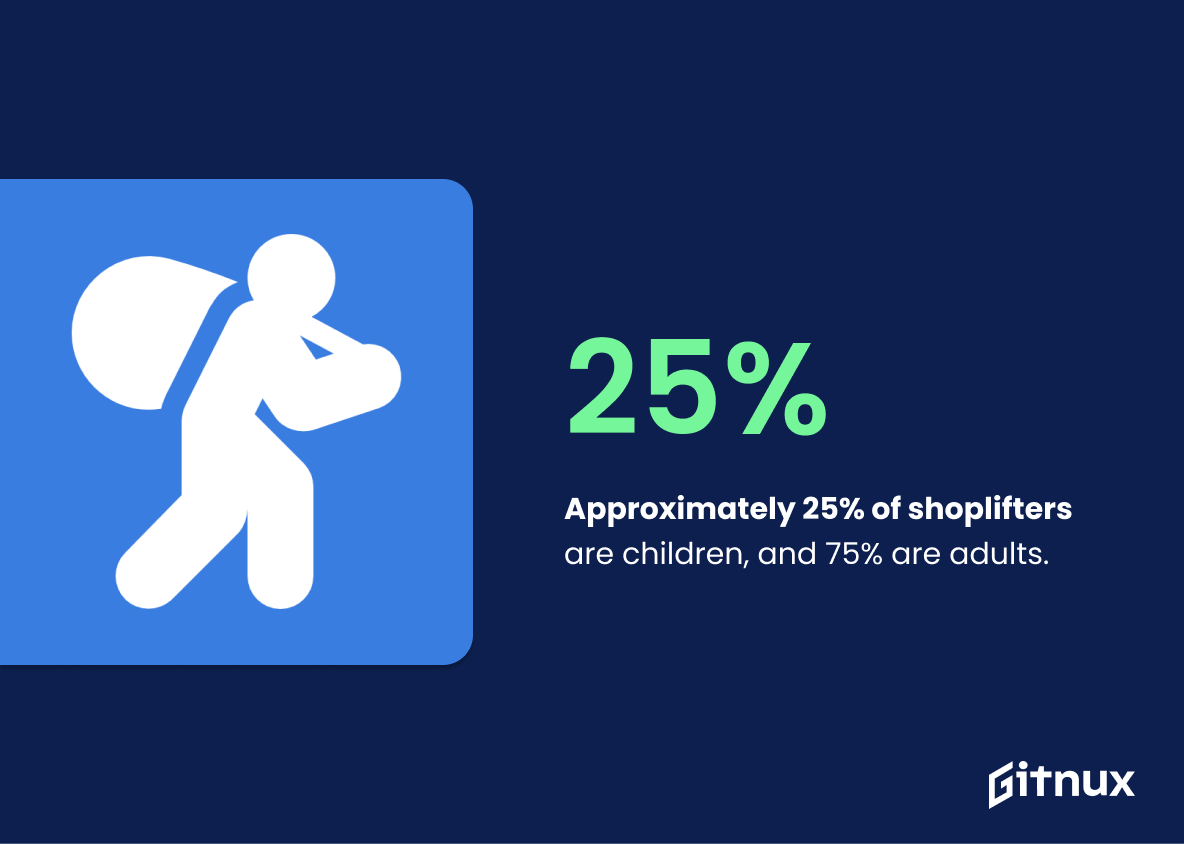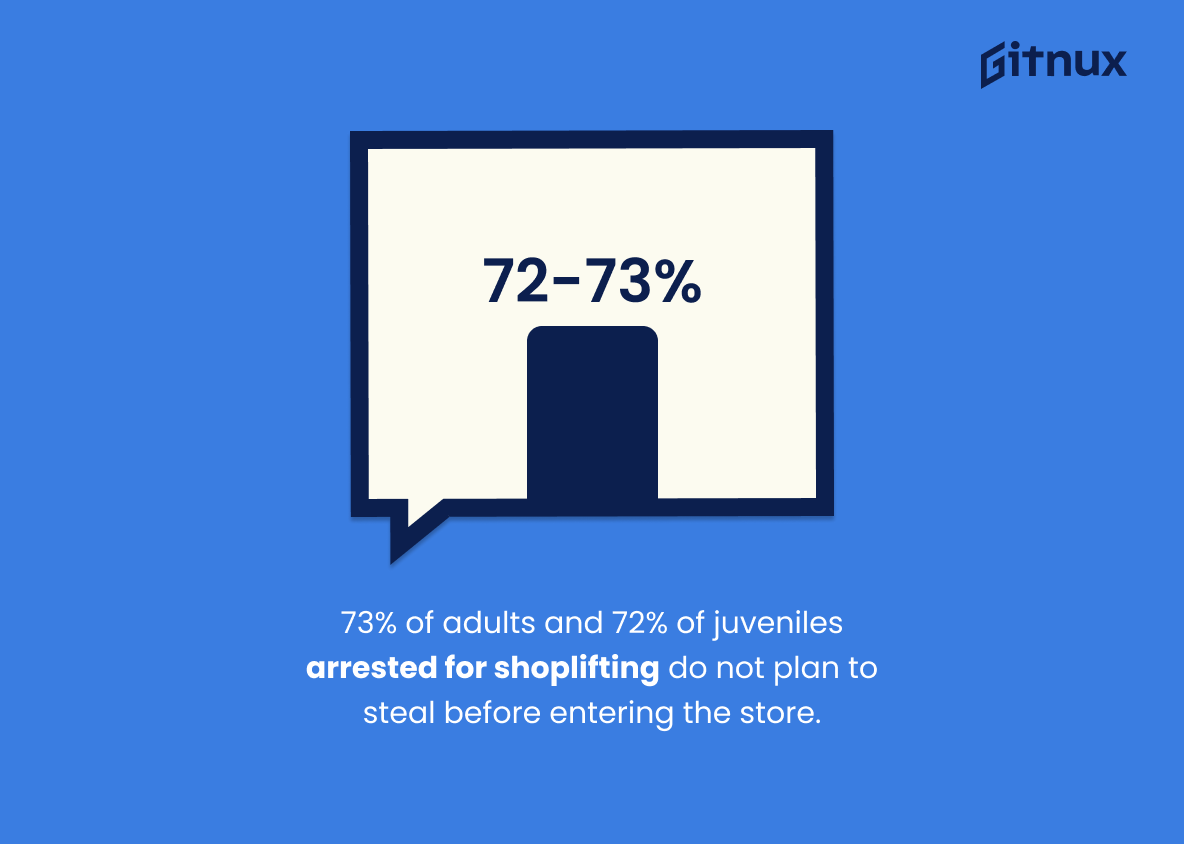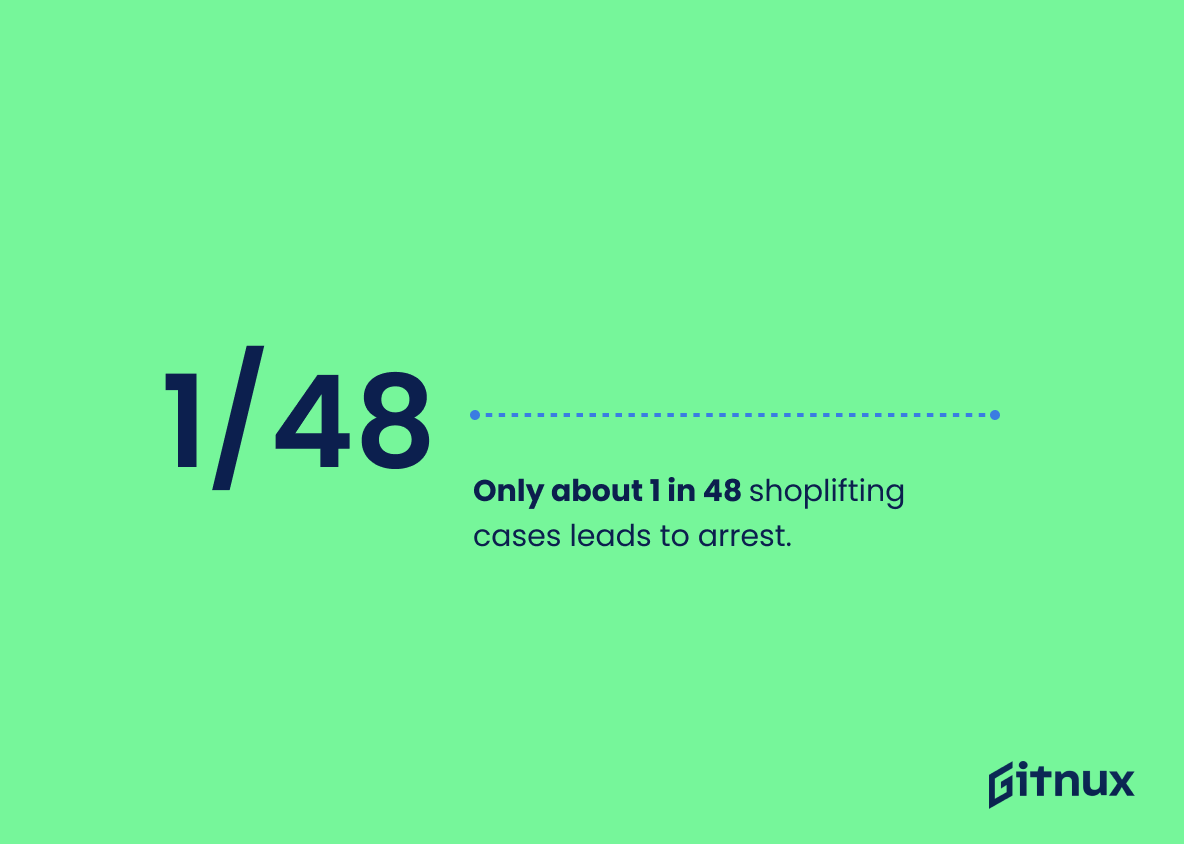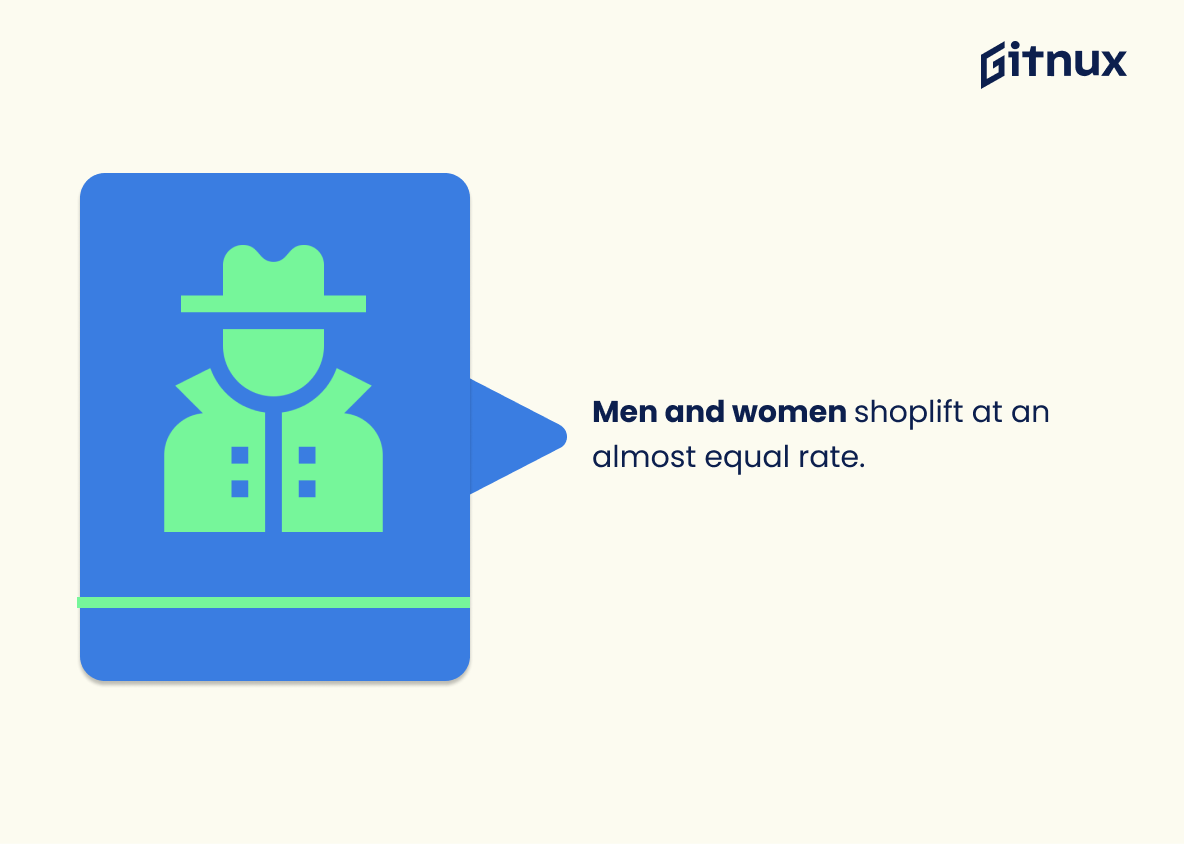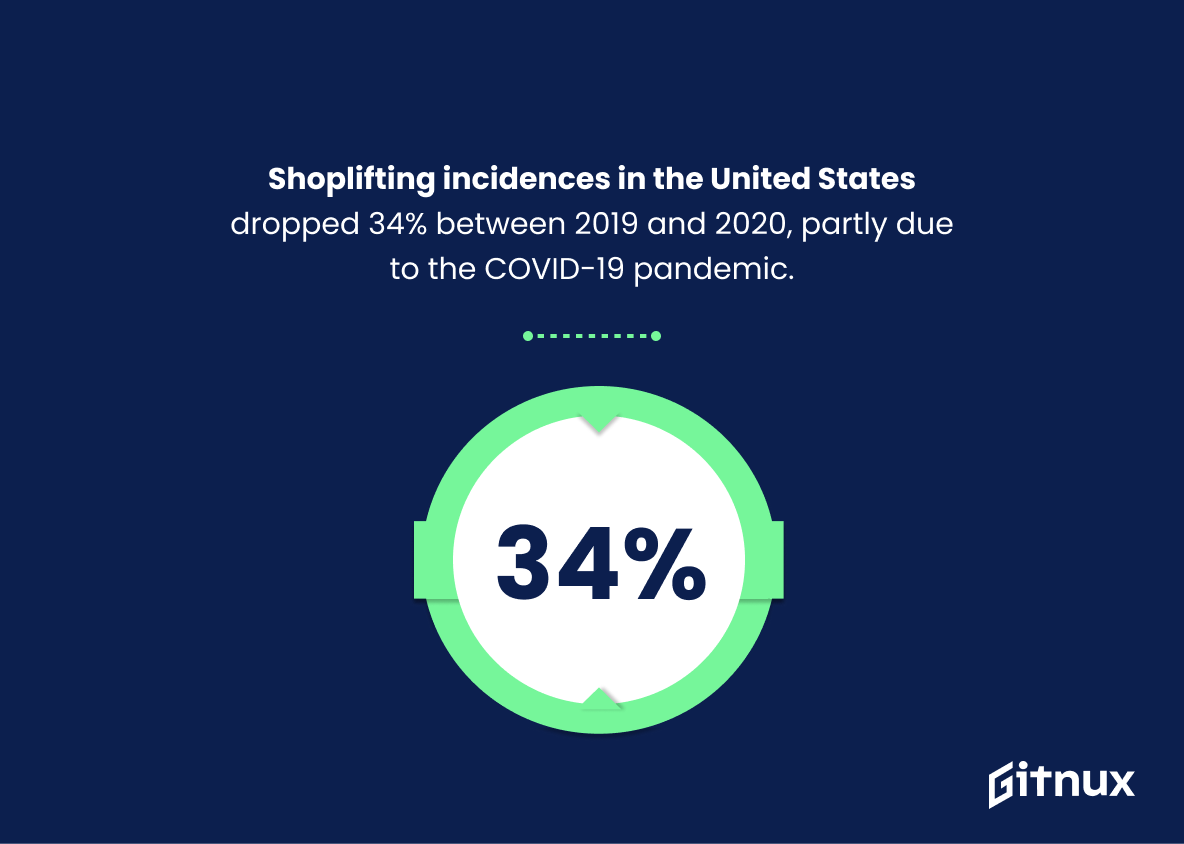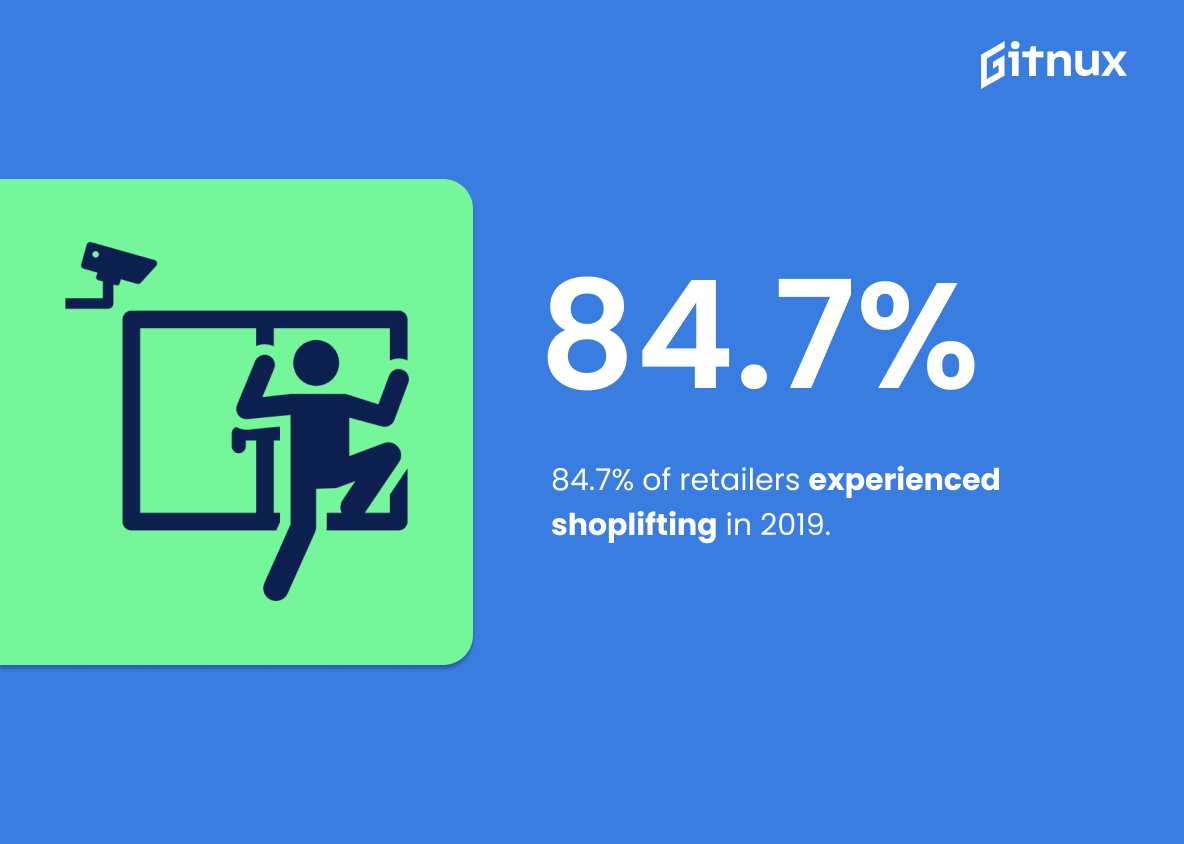Shoplifting is a serious problem that affects businesses and individuals alike. According to statistics, approximately 1 in 11 people in the United States (9% of the population) have shoplifted at some point in their lifetime. There are about 27 million shoplifters across the country, costing businesses nearly $13 billion annually.
Retailers lose an estimated 1.33% of their revenue each year due to shoplifting, with 25% of those caught being children and 75% adults – 55% claiming they started as teens. Over 50 percent claim drug addiction or alcoholism as a main factor for theft while 3 percent are classified as “professional” thieves who steal solely for economic gains.
Surprisingly only one out of 48 cases leads to arrest despite 73 percent of adult and 72 percent juvenile arrests not planning on stealing before entering stores – items stolen averaging around $50 value per incident regardless if it’s men or women doing so; incidents peaking during December holiday season when retailers employ one loss prevention employee per 279 employees trying to combat such activity which dropped 34 % between 2019-2020 partly due to COVID-19 pandemic yet still accounts for 36.5 % inventory shrinkage among 84.7 % retailers experiencing same issue over past years including 8% increase within UK alone from 2017-2019 where apparel remains most commonly targeted item followed by cosmetics , alcohol & electronics ; 10 million+ having been caught last 5 yrs US wide according stats provided herein .
Shoplifting Statistics Overview
Approximately 25% of shoplifters are children, and 75% are adults.
This statistic is a powerful reminder of the prevalence of shoplifting, and how it affects people of all ages. It highlights the fact that shoplifting is not just a problem for adults, but that children are also engaging in this activity. It is important to consider this statistic when discussing shoplifting, as it can help inform strategies to prevent and address this issue.
73% of adults and 72% of juveniles arrested for shoplifting do not plan to steal before entering the store.
This statistic is a powerful reminder that shoplifting is often an impulsive act, rather than a premeditated one. It suggests that the majority of shoplifters are not maliciously targeting stores, but rather are succumbing to a momentary lapse in judgement. This insight can be used to inform shoplifting prevention strategies, such as providing more visible security or offering more support to those who may be struggling with impulse control.
Only about 1 in 48 shoplifting cases leads to arrest.
This statistic is a stark reminder of the prevalence of shoplifting and the lack of consequences for those who engage in it. It highlights the fact that shoplifting is a crime that often goes unpunished, and that the majority of shoplifters are able to get away with it. This statistic is an important part of understanding the scope of shoplifting and the need for better prevention and enforcement measures.
Men and women shoplift at an almost equal rate.
This statistic is significant in the context of shoplifting statistics because it dispels the notion that shoplifting is predominantly a male-dominated crime. It shows that men and women are equally likely to engage in shoplifting, which is an important reminder that shoplifting is a crime that affects people of all genders.
Shoplifting incidences in the United States dropped 34% between 2019 and 2020, partly due to the COVID-19 pandemic.
This statistic is a testament to the impact of the COVID-19 pandemic on shoplifting incidences in the United States. It demonstrates that the pandemic has had a significant effect on the rate of shoplifting, with a 34% decrease in just one year. This is an important statistic to consider when discussing shoplifting statistics, as it provides insight into the current state of shoplifting in the US.
84.7% of retailers experienced shoplifting in 2019.
This statistic is a powerful indicator of the prevalence of shoplifting in 2019, demonstrating that the vast majority of retailers were affected by this crime. It serves as a stark reminder of the need for retailers to take proactive steps to protect their businesses from shoplifting.
In the UK, shoplifting incidents have increased by 8% between 2017 and 2019.
This statistic is a stark reminder of the growing prevalence of shoplifting in the UK. It highlights the need for greater awareness and prevention measures to be taken in order to reduce the number of shoplifting incidents. The 8% increase in shoplifting incidents between 2017 and 2019 is a cause for concern and should be addressed in order to protect businesses and consumers alike.
Over 10 million people have been caught shoplifting in the last five years in the United States.
This statistic is a stark reminder of the prevalence of shoplifting in the United States over the past five years. It serves as a reminder that shoplifting is a serious problem that affects millions of people and businesses each year. It also highlights the need for businesses to take steps to protect themselves from shoplifting and for law enforcement to take a proactive approach to preventing and prosecuting shoplifting.
Conclusion
The statistics presented in this blog post demonstrate the prevalence of shoplifting across the United States and other countries. Approximately 1 in 11 people have shoplifted at least once, with over 27 million active shoplifters currently living in America alone. Shoplifting costs businesses nearly $13 billion annually, resulting in a loss of approximately 1.33% of their revenue each year. It is also estimated that 25% of all shoplifters are children and 75% are adults, while 55% claim to have started stealing as teenagers due to drug addiction or alcoholism issues.
Furthermore, 3 percent can be classified as “professional” thieves who steal solely for economic gains; however, only one out 48 cases leads to arrest on average. The most commonly stolen items include apparel followed by cosmetics, alcohol and electronics with an average value per item being around $50 USD regardless if it was taken by men or women alike – although incidents peak during December when retailers employ one loss prevention employee per 279 employees to combat theft more effectively than usual.
Finally, both US-based retail stores (84%) and UK-based ones (8%) experienced increases between 2017-2019 despite overall decreases from 2019-2020, attributed partly due to COVID-19 pandemic restrictions . All these facts point towards a need for better security measures within shops worldwide so that business owners may protect themselves against losses caused by such criminal activities.
References
0. – https://www.losspreventionmedia.com
1. – https://www.retailgazette.co.uk
2. – https://www.shopliftingprevention.org
